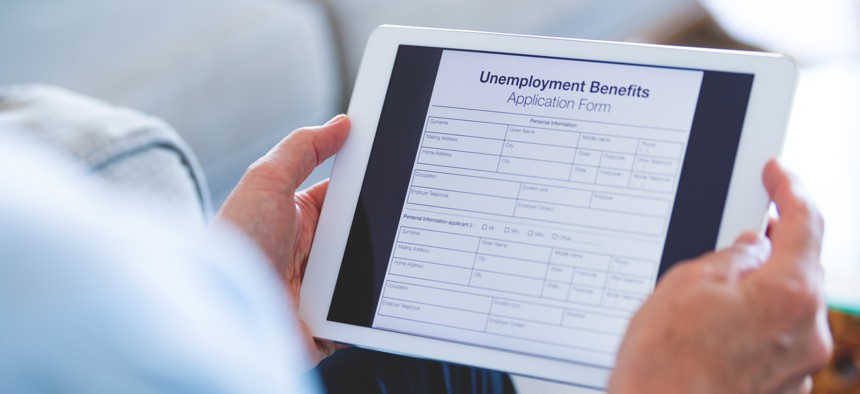Feds move to make gov websites more accessible to people with disabilities

courtneyk/Getty Images
It’s the first time the federal government has ever issued rules clarifying how the more than 30-year-old Americans with Disabilities Act applies online. But the new rules come with a hefty price tag for state and local governments.
Government websites are often riddled with accessibility challenges for people with disabilities—everything from small text, sites that are not mobile friendly, live audio that lacks captions, forms with hard-to-follow instructions and poor color contrast. These issues make it harder for users with disabilities to access services and interact with their localities.
It’s a problem that has only grown more prominent in recent years as governments have moved more of their services online in the wake of the COVID-19 pandemic. People with disabilities are increasingly struggling to access information about services as varied as voting, health and safety resources, government benefits programs and mass transit.
But last week, U.S. Attorney General Merrick Garland looked to rectify the issue with the signing of a new rule under Title II of the Americans with Disabilities Act. It is the first time federal officials have ever clarified how the 34-year-old law should be applied online.
The final rule provides standards and technical requirements designed to break down barriers that prevent people with disabilities from accessing government websites and mobile apps by requiring governments to comply with internationally recognized standards from the World Wide Web Consortium.
In addition to mandating that websites be easily navigable, understandable and readable, the standards also oblige websites and apps to make pages available in landscape and portrait orientation; provide services like text captions for audio and video; add alternative text for images; and allow users to resize text. Websites must be completely usable with just a keyboard, and not be designed to provoke seizures or physical reactions.
The new rules come with a hefty price tag as well.
The Department of Justice estimates counties could face a bill of around $967 million nationwide just to comply with the new standards, while cities could expect to pay upwards of $2 billion. Ongoing annual average costs after implementation would be $80.6 million for counties and $252.7 million for cities. Similarly, townships, school districts and higher education institutions could also face compliance costs in the billions.
The DOJ estimates it could cost state governments $275 million to get into compliance, and on average cost a state $22.6 million a year after implementation. It is unclear why the price for states is lower.
Once full implementation is complete, though, the DOJ estimates it could save governments hundreds of millions, if not billions, of dollars each year. The agency reached those estimates due to the reduced contact time needed for some residents, and their increased ability to access services online rather than by mail, phone or in person.
The effort has already garnered the support of several state leaders. In a joint October letter, the attorneys general of 11 states called the rules a “balanced approach” that will help ensure equal access to government services and activities, while also “setting forth obligations that public entities can reasonably achieve given the innovation and dynamism of websites and mobile apps.”
Governments with populations of 50,000 people or more will have two years to comply after the rule is published in the Federal Register. Those with fewer than 50,000 people have three years. The rule will not impact archived content, preexisting electronic documents, third-party content, any documents that are password-protected or social media posts.
Garland said in a statement that the rule marks the DOJ's “latest effort to ensure that no person is denied access to government services, programs or activities because of a disability.” The agency initially began the rulemaking process in 2010, but withdrew it at the end of 2017.
“For far too long, people with disabilities have been left behind as we've witnessed more services and government activity increasingly move online,” Assistant Attorney General Kristen Clarke of the DOJ’s Civil Rights Division said in a statement. “This rule is helping to usher us into a new era by bringing an end to the discrimination faced by millions of Americans with vision, hearing, cognitive and manual dexterity disabilities across our country.”
Outside groups have been sounding the alarm for some time about government websites and their lack of accessibility. In a 2018 report, the Information Technology and Innovation Foundation found that while most state government websites scored well on the time they took to load pages, they were not as mobile friendly.
ITIF said common issues included content that was not configured to fit mobile screens, and links and buttons that were too small. Security features were also lacking, while only 59% passed accessibility standards.
The group called DOJ’s rule a “much-needed step.” Daniel Castro, vice president of ITIF, said in a statement the rule is “an important step forward in creating a more inclusive digital society.” He urged state and local governments to “act swiftly and without delay” to update their websites.






